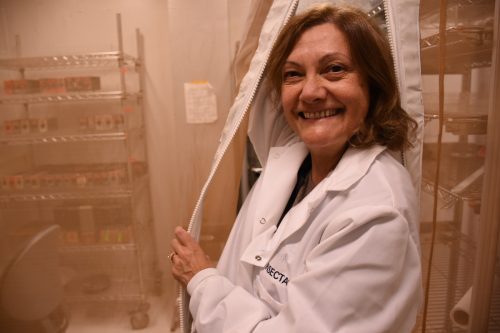Sometimes organisms can form unlikely teams—imagine the Egyptian plover bird cleaning the teeth of the Nile crocodile. Researchers from the Aksoy Lab in the Yale School of Public Health’s Epidemiology of Microbial Diseases Department investigate how gut bacteria “collaborate” with their host insects. Recently, they published a study linking gut bacteria in the tsetse fly to the immune system’s first line of defense.
Researchers study insect microbiomes, a collection of microorganisms in the body, as a model for our own. Human gut microbiota contain hundreds of bacterial species that actively regulate bodily functions. The insect microbiome operates at a smaller scale, and researchers can utilize the natural specificity of only a couple bacterial species to investigate a small yet mechanistically complex world.
The tsetse fly gut houses only two symbiont bacteria species, Wigglesworthia and Sodalis. Wigglesworthia stimulates the fly’s cellular machinery to produce a molecule, odorant binding protein six, associated with the immune system’s first line of defense. Notably, when researchers nurtured the flies without Wigglesworthia, wounds to the cuticles, or outer layers of the body, failed to clot.
The symbiotic relationships between bacteria and host organisms are intricate and longstanding. Wigglesworthia has lived in tsetse flies for approximately 50 to 80 million years. In our own bodies, bacteria outnumber our own cells by a factor of ten. These incredible relationships have spurred projects such as the Human Microbiome Project, which will investigate the different bacterial communities in the human gut. The study from the Aksoy Lab represents the start to finding the molecular mechanisms by which symbiotic microbes affect our health.

